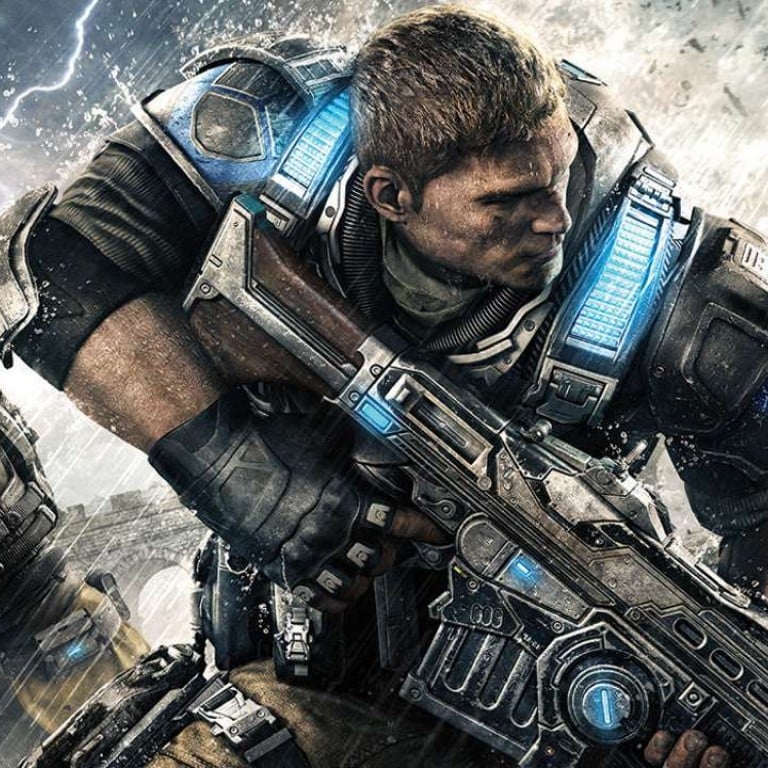
Game review: Gears of War 4 – a new lease on life for fading series
A coherent single-player campaign and exhilarating online options renew this Xbox stalwart for fresh battle
Gears of War 4
The Coalition/Microsoft
4 stars
Depending on your outlook, the fourth title in this muscle-bound sci-fi series could easily look like an anachronism. It’s a single-path third-person cover-shooter that pays no heed to modern demands for open worlds, and belongs to a franchise that has looked somewhat jaded over the past few iterations. But Microsoft has cannily brought in a new developer, the Coalition, and it has administered a much-needed injection of fresh ideas, without compromising the core appeal.
After a brief nostalgic prologue, Gears of War 4 (for Xbox One and PC) takes place 25 years after the Locust antagonists were (apparently) finally defeated in Gears 3. The planet Sera has changed massively in that quarter-century; the COG have become the baddies, exercising fascistic control over the populace with the help of a robotic army known as DBs, even though the authoritarian female first minister Jinn, begins by paying lip-service to series hero Marcus Fenix at a commemorative rally. You play as James “JD” Fenix, son of Marcus, who has gone AWOL from the COG and hooked up with a bunch of “outsiders” living off-grid in a country village.
Along with sidekick Del and Kait, the franchise’s first properly central female character, JD embarks on a raid of a COG establishment with the aim of stealing a Fabricator – essentially a 3D printer with knobs on, which can make weapons and fortifications.

The merry band – moving through a world which, at last, hasn’t been entirely constructed using a colour palette of black, brown and grey – take on wave after wave of robots, using disappointingly weedy new weapons. But a change-up soon occurs: after returning to the outsider village and fending off a major COG assault (which seamlessly introduces the changes the Coalition has made to Gears of War’s legendary horde mode), a new enemy, which JD and company dub the Swarm, appears, kidnapping Kait’s mother, village headwoman, Reyna, and the rest of the village’s inhabitants.
So JD and his cohorts embark on another world-saving quest – and the first stop involves approaching the now-grizzled (but still gung-ho) Marcus Fenix who, rather unexpectedly, has opted for bucolic retirement in a country pile. Luckily, Marcus has his old COG gear, so at last you can reacquaint yourself with the trusty assault-rifle-cum-chainsaw Lancer and the Gnasher shotgun.
In the quest to find Reyna and discover the truth about the Swarm, Sera’s harsh climate occasionally intervenes: “windflares” often strike, pairing beyond-hurricane-force winds with deadly localised lightning. In those sequences, impressive physics let you take out swathes of enemies by bringing the environment into play, and often add a puzzle-solving element. The Coalition has also thrown in some on-rails sequences, which are less successful, though: they simply feel too on-rails.
There are, of course, boss battles, and the various forms of the Swarm force you to take a more tactical approach than in the past – although you still have to fill them full of unfeasible quantities of lead, albeit in a much less indiscriminate manner. Overall, the single-player campaign offers a much more varied, flowing experience than previous Gears of War games. It isn’t the longest, though: those in a hurry could finish it in about nine hours.
The game’s real meat, however, lies online, with two major pillars in the form of versus multiplay and Horde 3.0 (the name reflecting the Coalition’s desire to register that the much-loved survival mode has been extensively revamped). In versus, Gears of War’s existing multiplayer modes make welcome returns, so you can plunge into war zone (team death-match with a single life per short-but-sweet round), team death-match (in which each team has an allocated number of lives), king of the hill and guardian. Plus there is the intriguing dodgeball, in which every time you kill an enemy, you allow a dead teammate, consigned to a queue, to respawn.
Another new mode, arms race, is likely to inspire either fanatical devotion or total indifference, as it forces you to cycle through all the game’s weapons: every three kills, your team will swap to a new model. It’s a great idea (one that we have seen variations on in the Call of Duty series, among others), but it also means you have to use the new DB weapons, which are vastly inferior to the original COG ones. Escalation, meanwhile is a new mode which has e-sports firmly on its agenda: it involves teams capturing three areas and ramps up respawn times at the end of each round.
Gears of War 4 will kick off with 10 maps (all of which are impeccable) and more will be provided for free via DLC. Frame-rate issues and lag, mercifully, were completely absent. But you can never tell whether Microsoft’s server network will be able to take the strain when everyone jumps online. If you’re nervous, watch and wait before purchasing.
Overall, Gears of War 4 may adhere to a seemingly old-fashioned template but, in practice, it feels anything but archaic. Its single-player campaign is much more varied and engaging than those of its predecessors and the online mode is exhilarating, catering for all shades of gamers, from the less adept to those with pro-gamer aspirations. The horde thoroughly deserves its 3.0 designation upgrade and as a whole, the fourth iteration gives the Gears of War template the rejuvenating shot in the arm it sorely needed.

